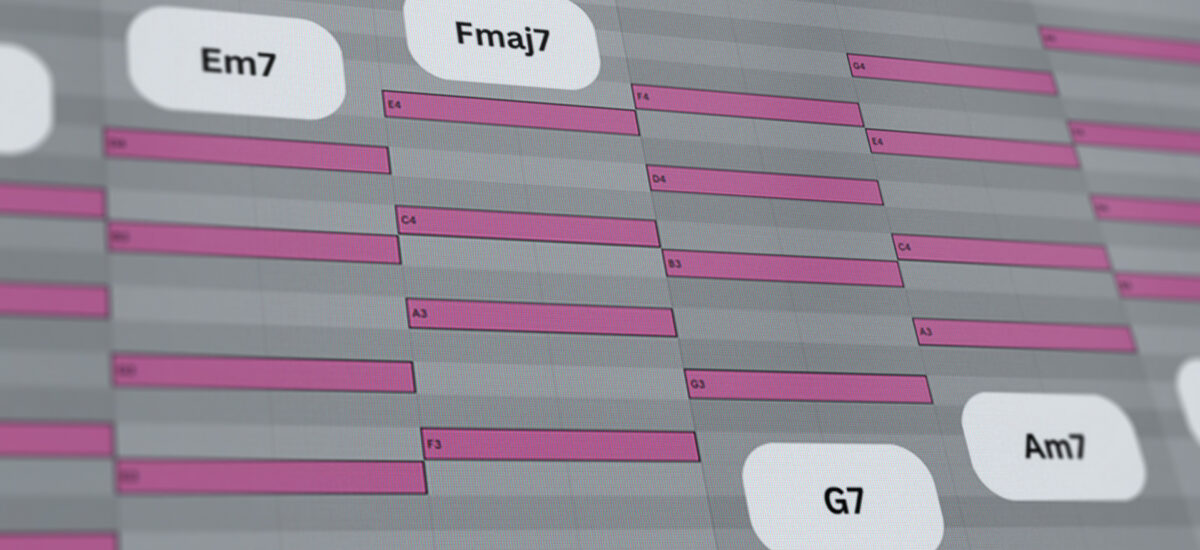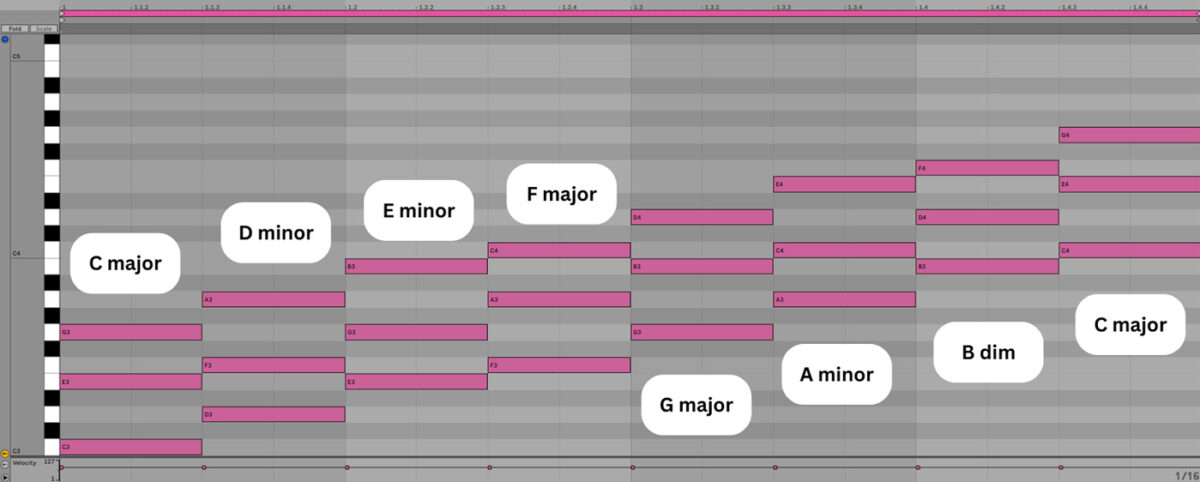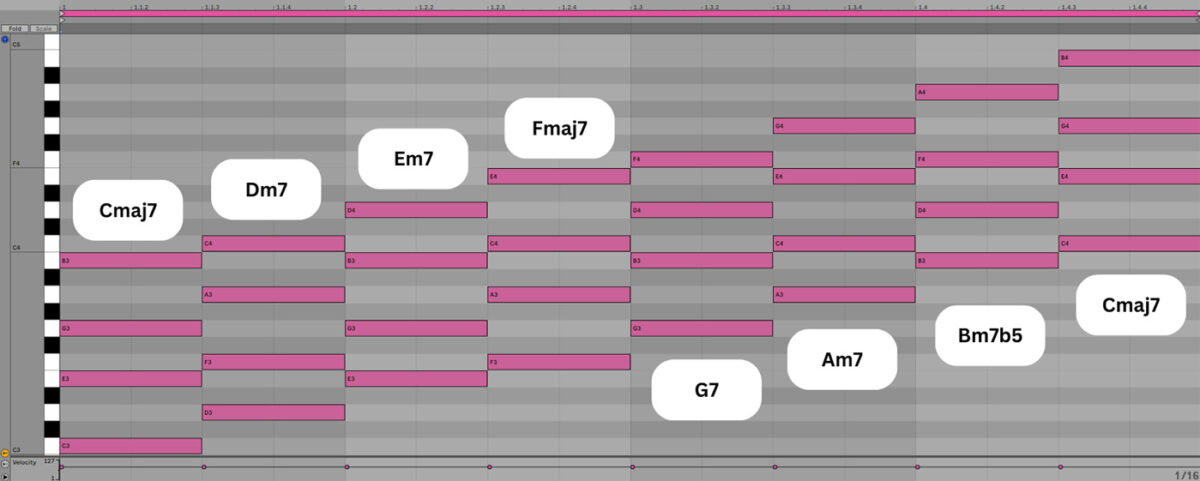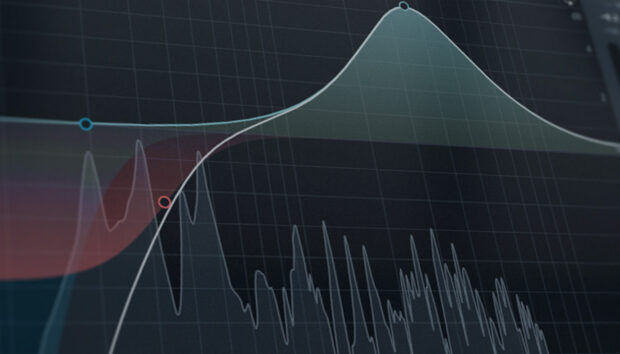
Lo-fi has made a massive impact on the music industry over the last few years. Its relaxing and chill atmosphere makes it perfect for studying, working, or winding down after a hectic day. The genre has also allowed bedroom artists to accrue millions of streams. If you’re a beatmaker or producer, you’ve probably considered making your own lo-fi music. If you’re just getting started, there are a few things you’ll need to have under your belt. One of those is a solid set of lo-fi chord progressions to layer over chill beats. So let’s take a look at how to make lo-fi chord progressions.
Jump to these sections:
- What are lo-fi chord progressions?
- What is the best key for lo-fi music?
- Lo-fi chord progressions to use in your music
Follow along with this tutorial using Komplete Start, a free set of instruments, sounds, and loops to get you started on making lo-fi music and more.
What are lo-fi chord progressions?
It’s important to know some music theory if you’re writing your own songs. One essential component of music theory is harmony – which is where chords come from.
Harmony and chords occur when two or more musical notes are played simultaneously. The most basic forms of chords are called “triads.” To create triads, all you have to do is take a scale and stack three alternating notes from that scale. Let’s look at this in practice by making chords from a C major scale.
The notes in the C major scale are C, D, E, F, G, A, B, (and C again).

Starting at the beginning of the scale, we can make a C major chord by taking C, skipping a note (D), using the E, skipping another note (F), and using the G. That leaves us with C, E, G – which is a C major chord.
Using that principle we can create seven triads from the major scale. We refer to those chords in Roman numerals:
- I: C major
- ii: D minor
- iii: E minor
- IV: F major
- V: G major
- vi: A minor
- vii°: B diminished

The Roman numerals used are important when reading chords because they indicate the “quality” of the harmony. If the Roman number is capitalized, we know that the triad is major. If it is not capitalized we know that it is minor. If there is a degree symbol (°) we know that the chord is diminished.
As you’ve seen, triads come in three basic “flavors”: major, minor, and diminished. Those types of chords all sound different. Words fall short when trying to describe the quality of chords. But it’s a good idea to associate some emotions with the chords you choose to utilize in your songwriting.
A major triad has a happy and bright sound:
A minor triad has a sad and dark sound:
A diminished triad has an unsettled and tense sound:
Lo-fi tracks sometimes include seventh chords. Those are similar to triads but they have an extra note on top of them, referred to as an “extension”. Remember how when we made triads we used one note from the scale, skipped one, and used another? You can use that same principle to add an extension to your chords. That note is the seventh, and it gives chords a jazzy sound.

There are several kinds of seventh chords in lo-fi chord progressions. Let’s listen to the ones that you’ll be hearing later, starting with the major 7th (maj7). It sounds like this:
The minor 7th (m7):
And the dominant 7th (simply referred to as “7”):
We won’t delve too deeply into this at the moment, but extensions can go up to thirteenths. To experiment with chord extensions, try adding notes from the scale on top of the chords you’re working with. Complex chord extensions often contribute to the character of lo-fi chord progressions.
Now that you understand what chords are, wrapping your head around chord progressions should be easy. Lo-fi chord progressions, like those of any genre, are a collection of chords that sound good when played in a particular sequence.
Lo-fi chord progressions specifically can be quite cyclical. They often consist of very few chords that repeat. That minimalist repetition and simplicity contribute to the genre’s laid-back vibe.
What is the best key for lo-fi music?
The best key for lo-fi music ultimately depends on you and your preferences. Experiment with the same progressions in different keys to find what resonates with you, and the emotions you’d like to express in the music you create.
Keys are not inherently better or worse for any type of music that you make. So lo-fi chord progressions can be played in any key, and one won’t necessarily sound better than another.
As a refresher, in music the “key” refers to the tonal center of the piece. It is generally the same as the first degree of the scale. So if the scale starts with C, we are in the key of C. If the first chord of the scale is major, we are in the key of C major.
When we move away from that first degree of the scale and its related chord – the home key of a piece – we create tension. When we come back to that degree and chord, we resolve that tension.
A unique feature of common lo-fi chord progressions is that, through various means, they often don’t fully resolve tension. That means that the chord progressions don’t feel like they come to a final resting place (usually the I chord). The lack of resolution in the music adds to a “floating” feeling rather than being unsettling – which can sometimes happen in music when you don’t resolve harmonic tension, so be careful.
Lo-fi chord progressions to use in your music
With all the preparatory information out of the way, we can focus on some common lo-fi chord progressions to get you started producing original lo-fi music.
We’re giving the basic variations of these chords below, but we encourage you to try out chord extensions like sevenths. Once you feel confident with sevenths and music theory basics, experiment with adding in ninths and elevenths to your lo-fi chord progressions.
All the examples we give will be in the key of C major/A minor.
1. Imaj7 – vim7: Cmaj7 – Am7
This sequence illustrates how simpler is often better when it comes to lo-fi music. Only consisting of two chords, the VI-i creates a chilled, cyclical, and relaxing atmosphere.
Listen to this chord progression in “On My Way” by Noji. In this version, a 9th extension is added to the vi chord for tonal ambiguity and color:
2. ivm7-im7-ivm7-im7-III : Dm7 – Am7 – Dm7 – Am7 – C major
In this chord progression, we hear another two-chord repetition. However, this one features a “passing chord” in the III. This chord isn’t necessary to the progression, but it creates a “stepping stone” for the chords to move between the i and the iv.
You can hear this movement in “Wanderlust” by Midnight Hour:
3. I-iii-vi-V: C major – E minor – A minor – G major
This is a popular chord progression across different genres, including pop. Adding chord extensions into it can repurpose it for a chilled lo-fi feeling.
Hazue demonstrates how to make this popular progression feel more lo-fi in their track “Organic.”
4. IVmaj7-iiim7-vim7: Fmaj7 – Em7 – Am7
Do you notice anything unusual about this sequence? It doesn’t include the I chord (C major) at all. The I chord would resolve this progression and give it a sense of completion. Without the I chord, we are left with a progression that feels like it can keep going forever.
Listen to this cyclical, non-resolving chord progression in “Botanical” by Sutton:
5. im7-VI-V7 : Am7 – F major – E7
This final chord progression features a descending movement into a dominant 7th chord which begs to be resolved. But because it simply restarts, once again we are left with a repeating rotation.
You can hear this sequence in “escapism” by swiftly.
Start using these lo-fi chord progressions
If you’re a producer or beatmaker aiming to make chilled and relaxing music, don’t hesitate to use the common lo-fi chord progressions we discussed above. These harmonic sequences are popular for a reason, and no one has exclusive rights to them. So go ahead and try them out in your original compositions to begin your lo-fi journey today.















